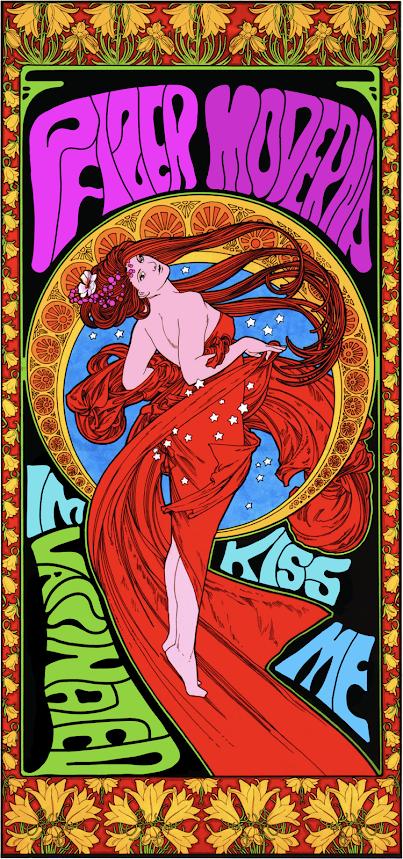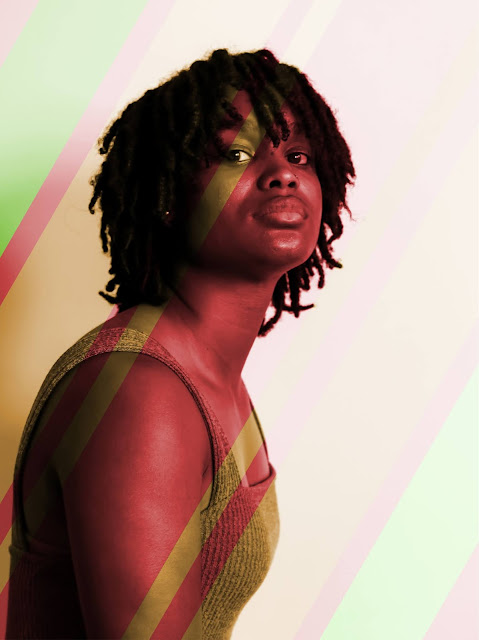Kiss Me, I'm Vaccinated
Art Nouveau came about in the late 1800s during a period of technological revolution, with cities and towns consumed by emerging industries. Many - especially artists - found the new industry ugly. They sought to express city life in a new way, using bright colors, unique fluid patterns, organic and floral ornamentation. They believed nothing was to simple or commonplace to be beautiful, from cups to advertisements to doorknobs.
Like the late 1800s, the 1960s were a period of technological and cultural upheaval. The Art Nouveau aesthetic resurged, especially through the floral patterns of hippie clothing. One of the most popular activities for youth at this time was attending concerts. Before the internet, perhaps the most effective way to attract people to your concert was a good poster. Designers co-opted the Art Nouveau aesthetics for their posters, including the abstract and floral patterns and feminine figures. These posters used bold, high contrast color schemes and barely legible text to capture a reader's attention and keep them mesmerized.
In these two pieces, I wanted to co-opt these aesthetics again for a contemporary setting. Modern design, from architecture to logos, has pushed toward a sleek, minimalist aesthetic. These posters reject this trend and opt for the bright, detailed aesthetic that the artists of Art Nouveau strived for in their rejection of the industrial aesthetic. Today, the COVID-19 pandemic dominates the global mindspace, influencing the way we work and interact, our culture and our daily activities. The past year has also undergone numerous upheavals, political and cultural. These posters are, at their simplest, advertisements for the Covid Vaccine. I used the same techniques poster designers of the 60s used to attract people to concerts - psychedelic typeface, bright colors, fluid curving lines, feminine figures - to now encourage people to get vaccinated. The title, "Kiss Me, I'm Vaccinated," juxtaposes a "product" (vaccine) and attractiveness, a common ploy of advertising. It also harkens back to the 60s culture, a period of crowded concerts, newly emerging (recreational) drugs, and a permissive sexual atmosphere. After months of quarantine, we crave physical contact and social interaction, and these posters invite you there - if you're vaccinated.




Comments
Post a Comment